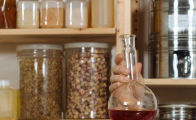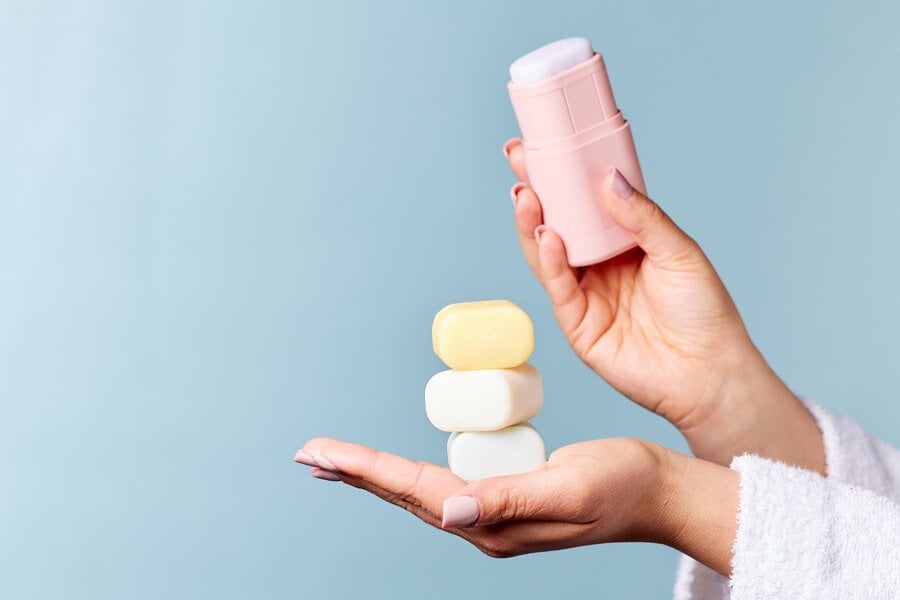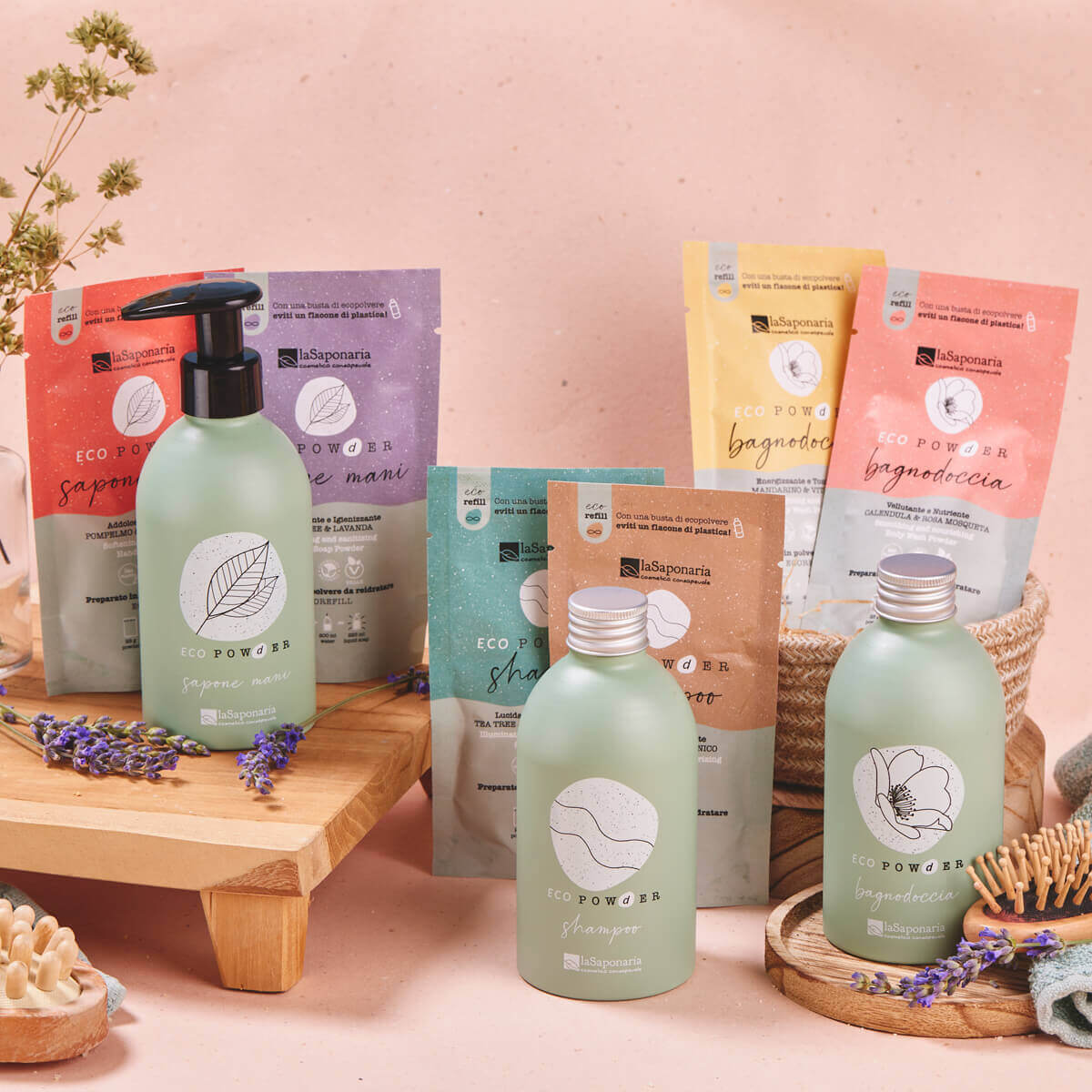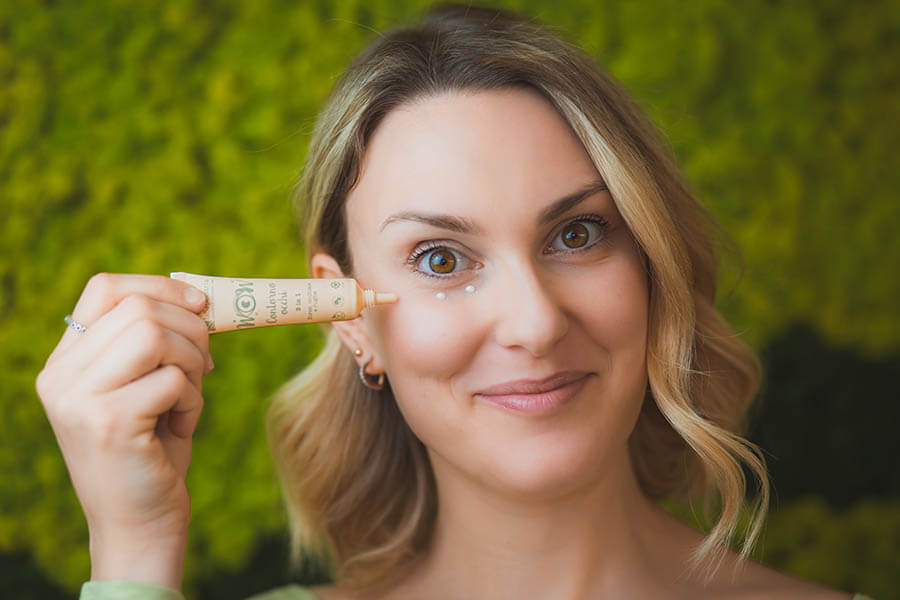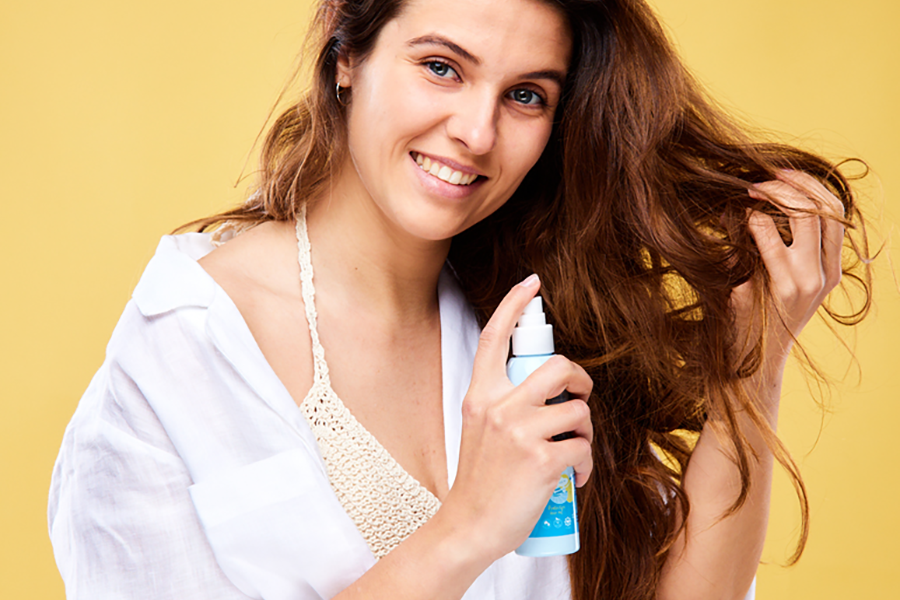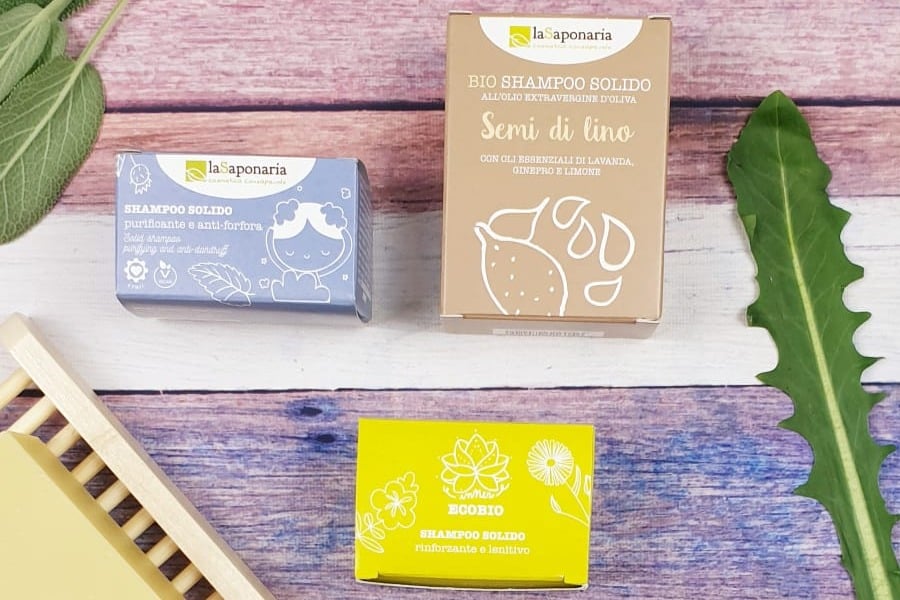The insights of La Saponaria
Covering Grey Hair: 10 Rules for a Perfect Result
If you’re thinking about switching to natural hair dyes—or you’ve already done it—and you want to cover your grey hair in a natural and flawless way, this guide is for you!
We’ll explain the key rules for effectively covering grey hair with henna and natural herbal dyes.
Choosing to abandon chemical dyes—and the potentially harmful substances they contain—in favor of natural dyes made from henna and herbal powders is a choice that benefits both your beauty and your health.
Henna and herbal dyes make the hair stronger and shinier, strengthening the hair shaft while adding volume and vitality at the roots.
One of the most common questions when transitioning to natural dyes is whether they truly cover grey hair.
Let’s clear this up: yes, henna and herbal dyes can cover grey hair, and by following a few simple rules you can achieve highly satisfying results.
Lawsonia: what is it and why it's essential
The most iconic herbal dye is classic red henna—a powder obtained from the dried leaves of the Lawsonia inermis plant.
It is the only herbal dye capable of effectively coloring and covering grey hair, thanks to lawsone, the pigment molecule that gives white or very light hair its characteristic red-orange tone and adds warm red reflections to darker hair.
Applied consistently, henna builds up on the hair, coating and strengthening the shaft (which is why it’s great for fine or damaged hair!) and gradually deepening the color.
Lawsonia is therefore essential for covering grey hair. When combined with other herbal dyes in the right proportions, you can achieve excellent coverage without necessarily ending up with red hair.
It is also an excellent treatment for oily hair, thanks to its antibacterial and purifying properties. It helps rebalance the scalp’s pH, supports healthy hair growth, strengthens the hair, and enhances shine, volume, and root lift.
Covering Grey Hair: 10 rules to follow
Here are a few simple but essential rules to achieve perfect results and fully cover grey hair:
1 > Two Consecutive Applications
If you only have a few grey hairs scattered here and there, we recommend applying the natural dye twice, with about one week between applications.
2 > Two-Step Process
If you have a high percentage of grey hair, you may need to use the so-called two-step method to enhance coverage.
This technique involves a first application— which, if you’re using Hennetica, can already be done with the final shade you want— and then repeating the process a few days later if the color still looks uneven.
In many cases, however, washing your hair with the Avatara pre-dye shampoo helps so much that even with many grey hairs, a second application often isn’t necessary.
Approfondisci come eseguire il doppio passaggio, quando è necessario farlo e quando no QUI.
3 > Application Frequency
To maintain a beautiful and even shade, we recommend reapplying the dye every 40 days, though this varies depending on how often you wash your hair.
If you wash your hair daily or almost daily, the interval may reduce to around 25 days.
4 > Clean Hair
Natural dye must be applied to clean hair, ideally washed beforehand with a purifying pre-dye shampoo like Avatara.
This step is crucial because it opens the hair cuticles and deeply cleans the hair, removing any residue from previous products, environmental pollutants, or sebum. All of these tend to create a film on the hair that blocks pigment penetration.
Applying the dye paste on unwashed hair may compromise your final result because chemical residues may prevent the color from adhering properly.
Additionally, washing your hair before applying the paste means you won’t have to wash it immediately afterward— reducing the risk of rinsing away color that has not yet fully set.
5 > Heat and Humidity
After applying the paste, wrap the hair in plastic film and keep it warm with a wool cap during the entire processing time.
Heat and humidity help the color develop more effectively and more quickly. You can also use a handy trick: apply warm air from a hairdryer for 2–3 minutes every 30 minutes over the wrapped hair.
6 > Pure Paste
Prepare the paste in purity, without adding additives or extra ingredients; only hot water (about 50–70°C / 122–158°F).
There’s no need to acidify the mixture because Lawsonia naturally has an acidic pH, and warm water alone is enough to maintain it.
Adding acidifying ingredients like yogurt, lemon juice, or vinegar— or any other ingredient— is discouraged because they can form a film on the hair and compromise pigment absorption.
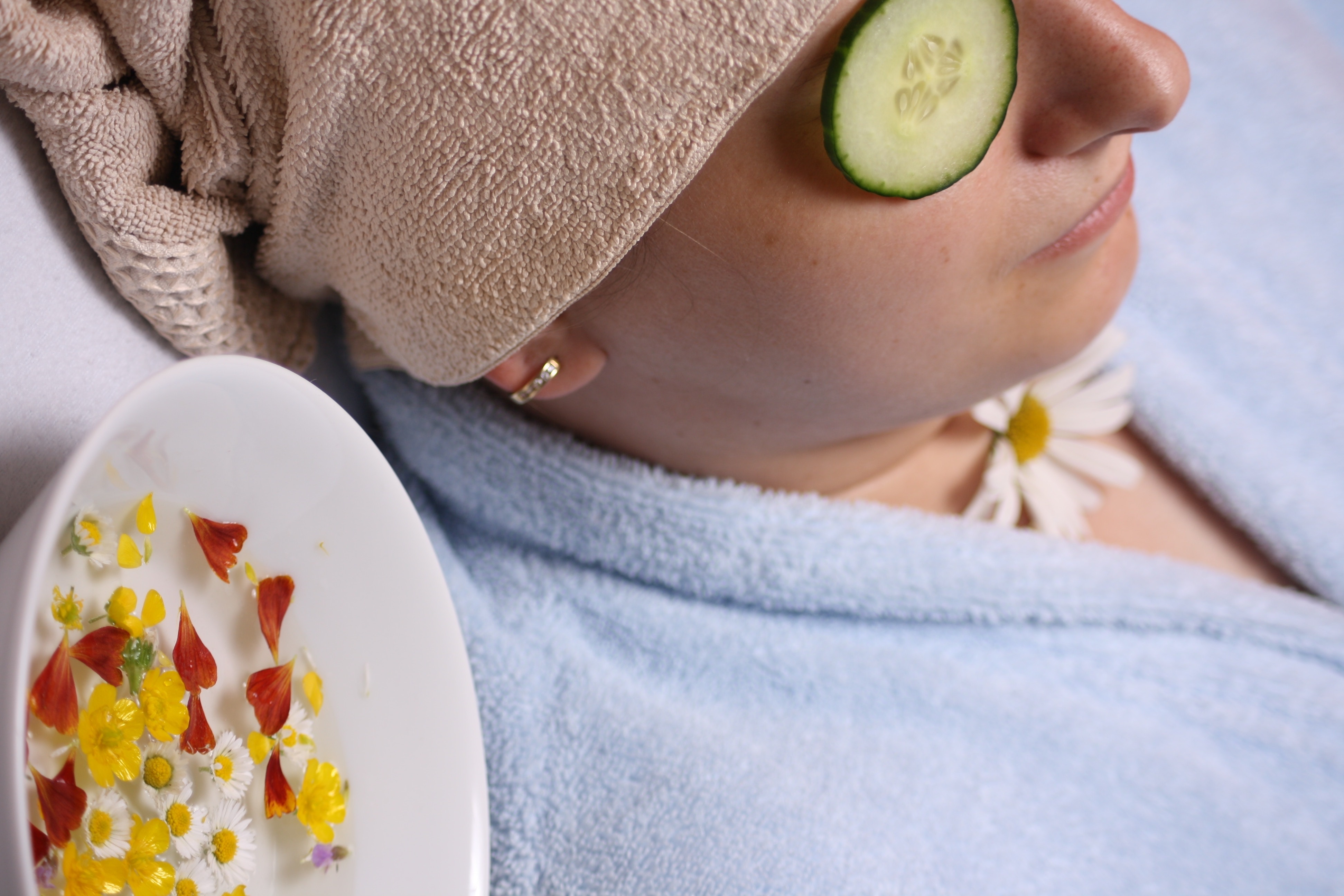
7 > Processing Time
Henna and herbal dyes require longer processing times.
Remember, these are not chemical dyes but completely natural ones that enhance your hair’s beauty and health— they simply need more time to work. Nature has its rhythms, and we must respect them.
To achieve satisfactory grey coverage, you need around 2 hours with a single application, or about 1 to 1.5 hours in the two-step method.
8 > No Silicones
It’s very important not to use hair products containing silicones.
Silicones create a coating around the hair shaft, preventing herbal pigments from penetrating.
Consistent use of products with silicones—from shampoos to styling products—will almost certainly result in poorer grey coverage, as well as dry, dull, stressed hair.
9 > Hair Type Matters
Very thick and strong hair almost always requires a two-step application, especially to cover grey hair, because it is less porous and absorbs color less easily.
Fine or damaged hair (often from chemical treatments), on the other hand, tends to be more porous and absorbs color more readily— so if you don’t have many grey hairs, the two-step process is usually unnecessary.
10 > Grey Hair at the Hairline and Temples
Grey hair at the hairline and temples is more difficult to cover, and the paste tends to dry faster in these areas.
A few more helpful tips
-
Hair that has undergone chemical treatments is more porous, absorbs color more easily, and requires shorter processing times.
-
To achieve a light brown, it’s better not to use the two-step method, as henna tends to darken hair over time due to its layering effect.
-
Hair at the roots colors more quickly and tends to stay slightly lighter than the lengths because it is in direct contact with the warmth of the scalp. So, when dyeing only the regrowth, do use the two-step process— it helps cover greys better and avoids two-tone hair.
-
With careful application, herbal dyes do not stain the skin around the face. If staining occurs, you can remove it with a cotton pad soaked in warm water and soap, cleansing milk, or lemon. Always wear gloves, as large amounts of paste can stain your hands.
-
Herbal dyes cannot lighten the hair; on the contrary, they tend to darken it over time because they layer on the hair. A useful trick to avoid excessive darkening is to apply the dye frequently only on the regrowth and dye the entire hair length only every two months. The color won’t wash out but may slightly lighten, and the red highlights will gradually become permanent.

Written by Erika
A knowledgeable expert in organic cosmetics and INCI analysis, she’s the perfect person to answer any beauty-related curiosity. She can respond to every question—even the most challenging ones—without ever losing her smile.



